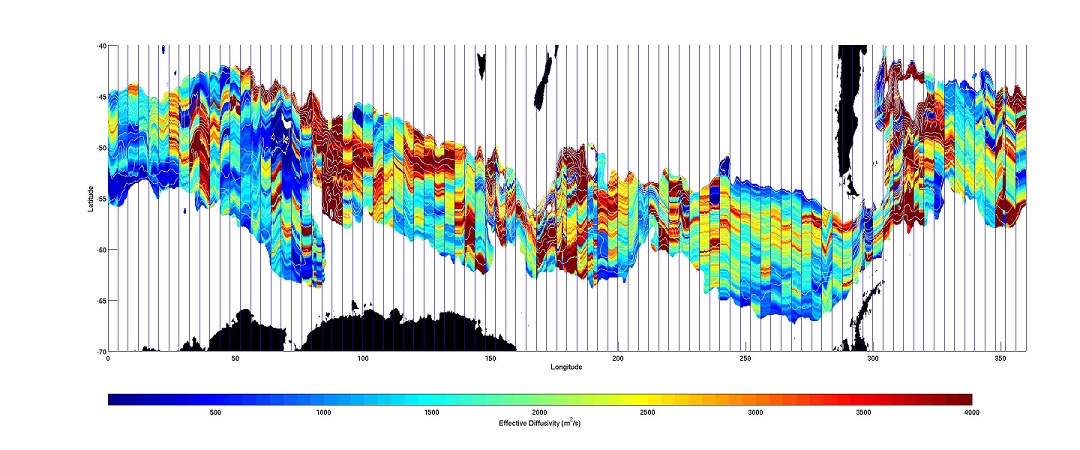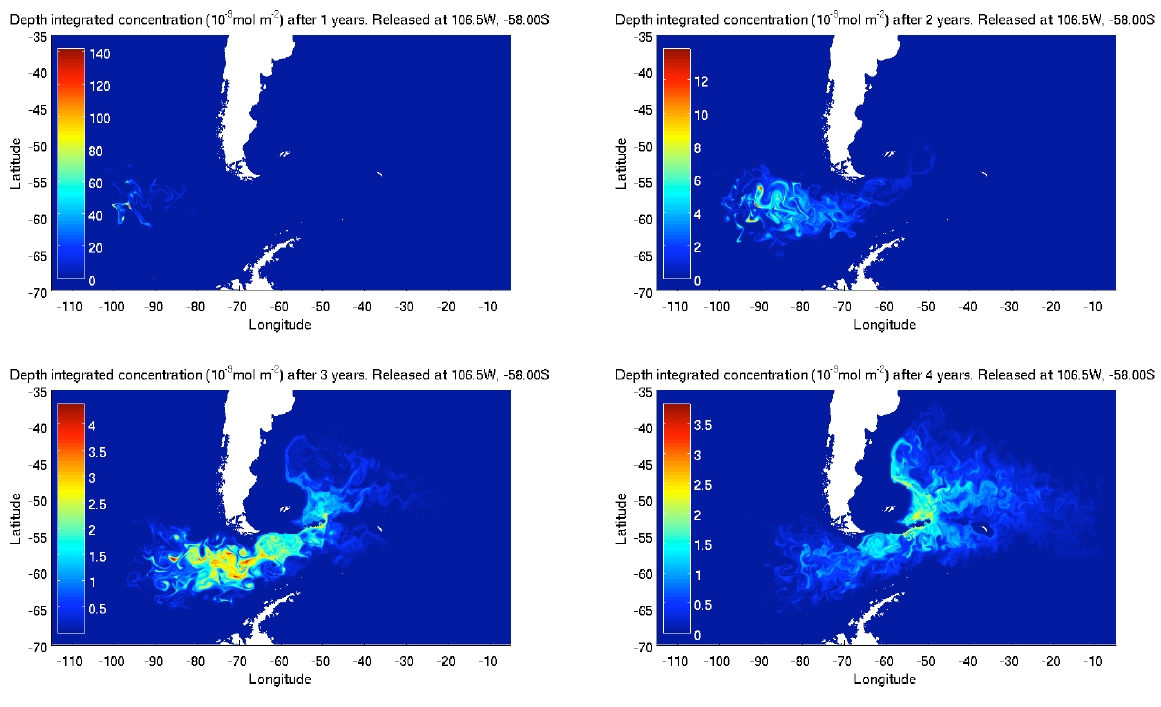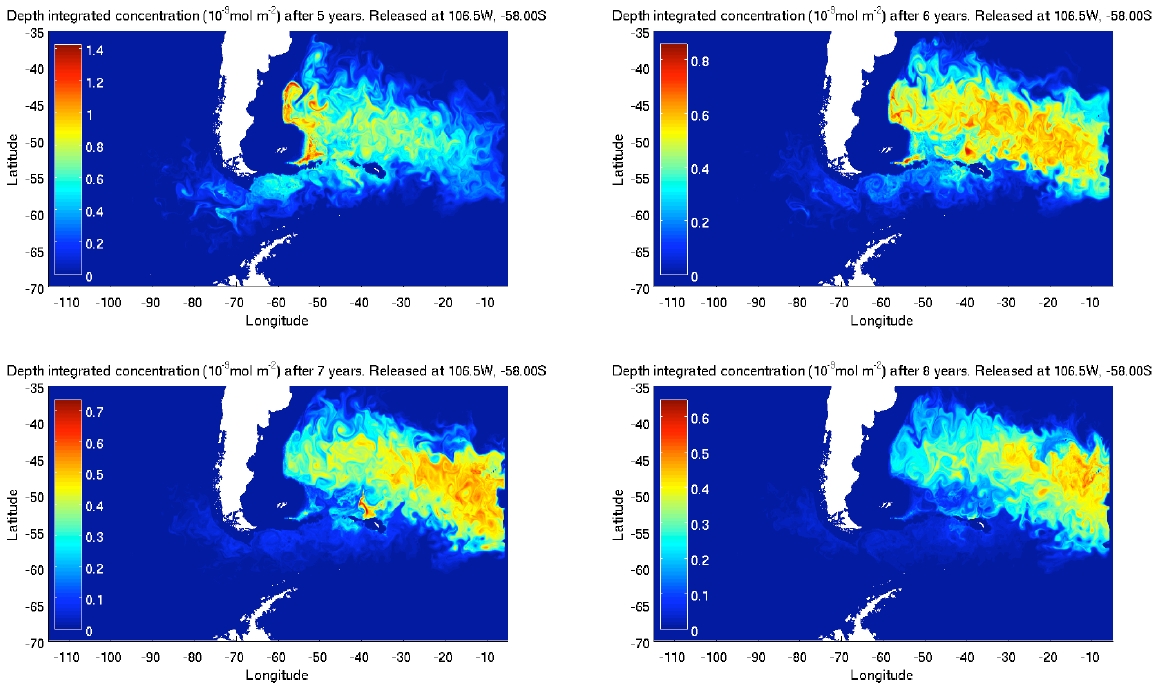Dr Martin Wadley Senior Research Associate - School of Maths
My research interests are the understanding of ocean circulation through computational modelling.
The benefits of using Grace for High Performance Computing
I use very large datasets (Tb) to drive large parallel fortran models. The models use numerical simulations of the fluid dynamics of ocean circulation. Simulations can use thousands of cpu hours.
I also use Matlab to produce visualisations of the model output, which requires large memory.
My work
The Diapycnal and Isopycnal Mixing Experiment in the Southern Ocean (DIMES) project is an international collaboration aimed at understanding mixing processes and rates in the Southern Ocean. The output from the modelling is used to guide the fieldwork carried out by other members of the Dimes project.
Fig 1. Isopycnal mixing at mid-depth (~500m) in the Southern Ocean. Mixing in the Southern Ocean is primarily driven by eddies, and is responsible for driving the upwelling arm of the meridional overturning circulation, which is responsible for Europe's warm climate. The mixing rates have been determined from a 12 year eddy-resolving simulation of the global ocean, and diagnosed from embedded tracer simulations performed on the UEA cluster. The spatial variability of mixing is not represented in the current generation of climate models, and these may therefore not have the correct response to increased greenhouse gas forcing.
Fig 1

Fig 2. Predictions of the evolution of the DIMES tracer for 8 years after release. A tracer was released in the south east Pacific in February 2009, and has been surveyed annually. Its lateral and vertical spread allow the mixing rates in the ocean to be determined. The ensemble predictions were made by release of tracer in an eddy-resolving ocean general circulation model, run on the cluster at UEA, typically using 96 processors. Each ensemble member took around 2 weeks to complete.
Fig 2


This is an animation of the predicted evolution of the DIMES tracer. Beware - 6MB do not watch on a slow network connection. The predictions guided surveys in the Southern Ocean, and comparisons between the observed and modelled tracer spread allowed modelled mixing rates to be compared with those in the real ocean.

)